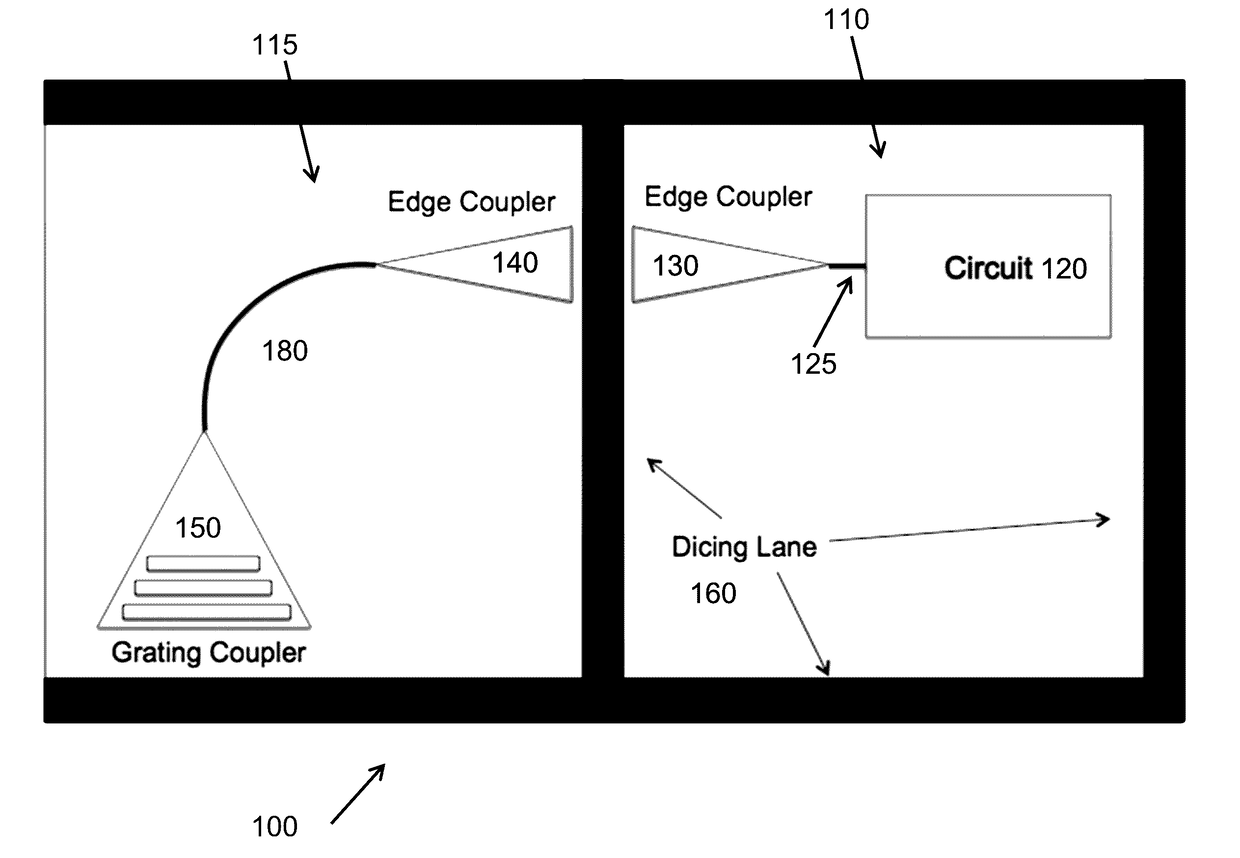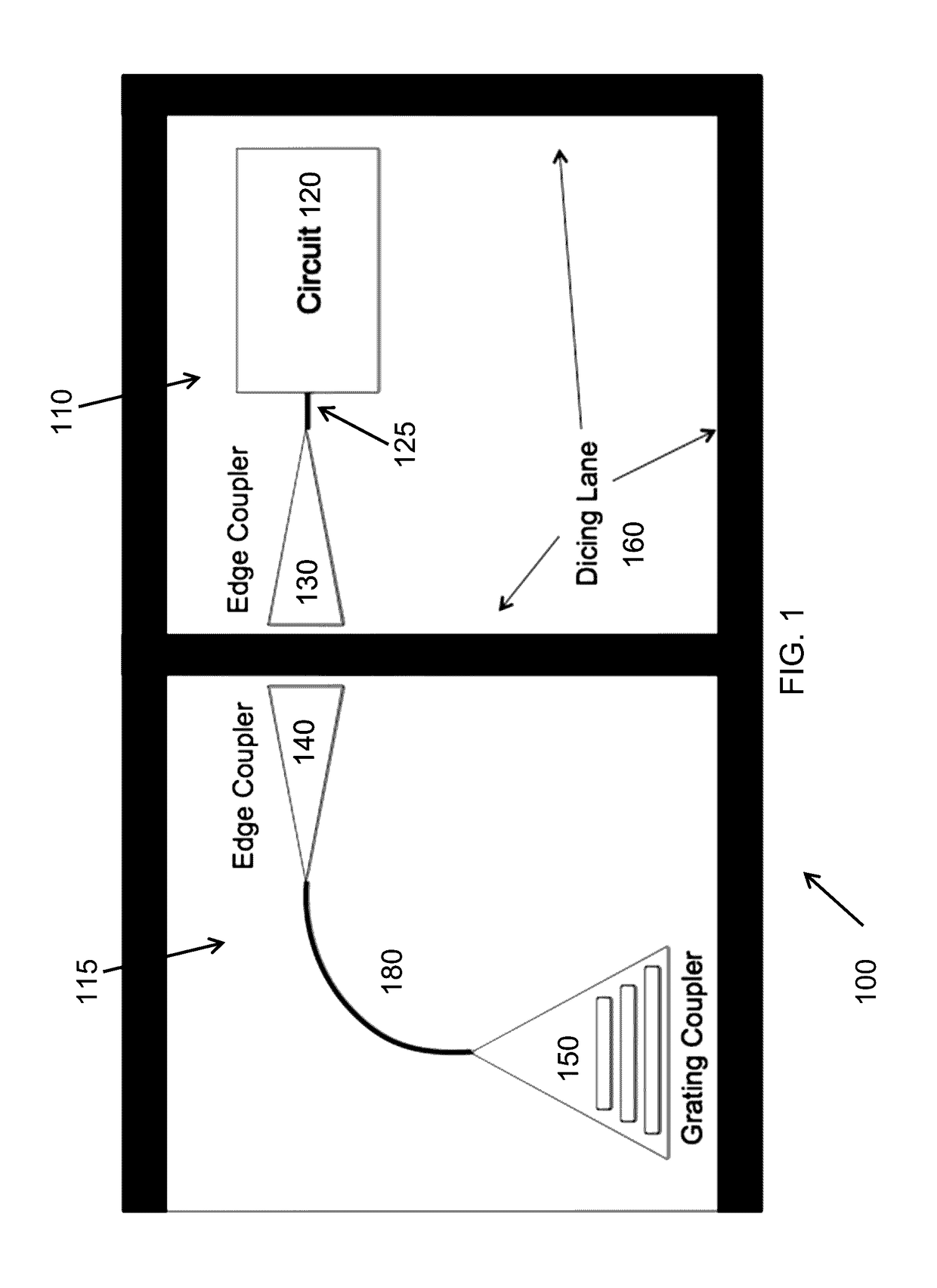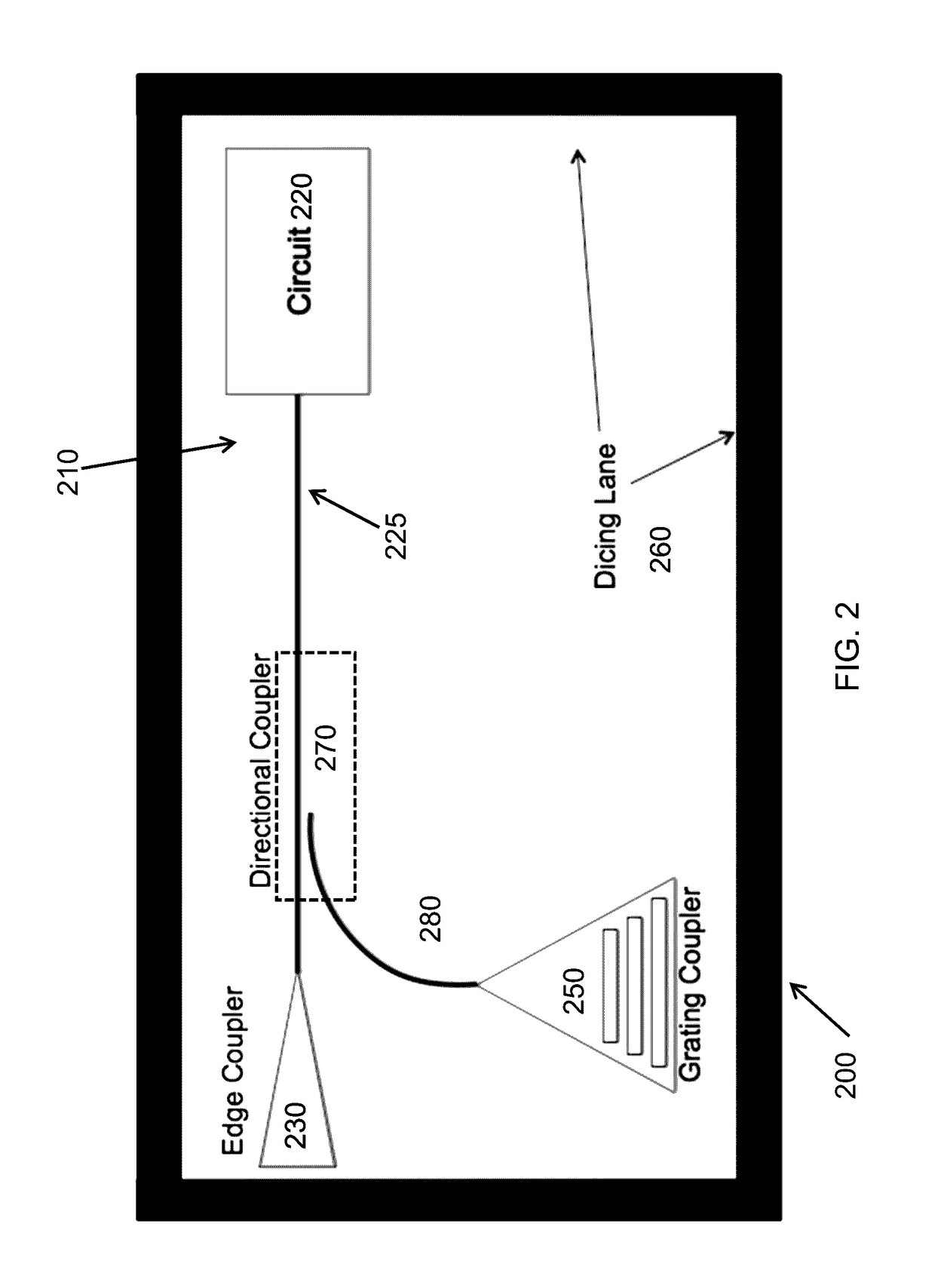Test systems and methods for chips in wafer scale photonic systems
a technology of photonic systems and chips, applied in semiconductor/solid-state device testing/measurement, instruments, optical elements, etc., can solve the problems of significant expense in the production of optical devices, the possibility of damage to the chip, and the cost of testing discrete chips that need processing before evaluating for failur
- Summary
- Abstract
- Description
- Claims
- Application Information
AI Technical Summary
Benefits of technology
Problems solved by technology
Method used
Image
Examples
first embodiment
[0084]FIG. 4 is a first cross sectional view through a wafer having a plurality of chips fabricated thereon. As shown in FIG. 4 an edge coupler 400 that is part of the test structure and an edge coupler 420 that is connected to a circuit are present. A region 410 that can be used to etch to separate chips on a wafer, or that can be a dicing lane, is illustrated. The test edge coupler 400 is constructed so that it is quite close to the edge coupler 420 during testing so that optical communication between edge coupler 400 and edge coupler 420 will be good. However, during etching or dicing for separating chips, some of edge coupler 400 will be lost, while none of edge couple 420 will be removed or damaged.
[0085]FIG. 5 is a second cross sectional view through a first embodiment of a wafer having a plurality of chips fabricated thereon. In FIG. 5, which is a diagram similar to FIG. 4 but after etching has occurred, one sees that part of edge coupler 400 is gone, but the edge coupler 420...
second embodiment
[0086]FIG. 6 is a cross sectional view through a wafer having a plurality of chips fabricated thereon. In the embodiment of FIG. 6, an edge coupler 620 connected to a circuit on a chip (not shown) communicates with another edge coupler 600 as illustrated by the propagating light 610 that propagates across an etch trench.
[0087]FIG. 7 is a cross sectional view through a third embodiment 700 of a wafer having a plurality of chips fabricated thereon. In the embodiment of FIG. 7, an edge coupler 730 connected to a circuit on a chip (not shown) communicates with another edge coupler 700 as illustrated by the propagating light 720 that propagates across an etch trench at an angle. Propagating light 720 is situated at an angle to a direction of propagation in edge coupler 730 in order to accommodate edge coupler 710, which is shown at a different height than edge coupler 730.
[0088]FIG. 8 is a cross sectional view through a fourth embodiment 800 of a wafer having a plurality of chips fabrica...
PUM
 Login to View More
Login to View More Abstract
Description
Claims
Application Information
 Login to View More
Login to View More - R&D
- Intellectual Property
- Life Sciences
- Materials
- Tech Scout
- Unparalleled Data Quality
- Higher Quality Content
- 60% Fewer Hallucinations
Browse by: Latest US Patents, China's latest patents, Technical Efficacy Thesaurus, Application Domain, Technology Topic, Popular Technical Reports.
© 2025 PatSnap. All rights reserved.Legal|Privacy policy|Modern Slavery Act Transparency Statement|Sitemap|About US| Contact US: help@patsnap.com



